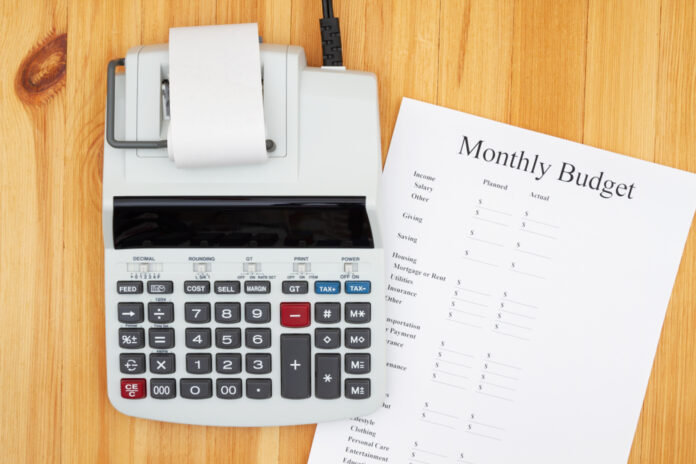If you struggle with money, creating a budget is a sure-fire way of understanding where you are spending your money. A budget also gives you the ability to cut back on those unnecessary purchases we’ve all found ourselves making. You don’t need to be a financial expert to create a simple budget for yourself. All you have to do is sit down and take the time to fill out a spreadsheet. Let’s look at a few simple steps to creating a budget.
1. Calculate your net income
The first step to any budget is calculating how much money you make each month. If your regular paychecks come from an employer then it’s likely taxes have already been taken out. If you’re self-employed be sure to take out the correct tax percentage so you don’t find yourself in rough water when tax season rolls around. Be sure to keep up to date on the tax percentage if you fall into the self-employed category.
2. List out your monthly expenses and define their type
After calculating your net income, it’s time to start listing out your monthly expenses. Rent, utilities, groceries, and gas are just a few of the common expenses you’ll likely be jotting down. It’s important to keep in mind any money you save each month whether it goes into a savings account or a Roth IRA.
It’s valuable to break your expenses into two different types, fixed and variable. This will give you a good idea of what payments you will be consistently paying each month along with your more flexible expenses. Knowing the difference gives you the ability to cut costs off the flexible list if money gets tight or you are looking to save a little extra cash.
3. Determine the average monthly cost of your expenses
Your expenses are listed and separated into categories. Now it’s time to figure out the average cost of each expense per month. It’s best to get out your bank and credit card statements to make sure you are writing down accurate figures. The fixed expenses should be easy to calculate as the payments are consistent from month to month. The variable costs will be a little tougher as you’ll have to average out what you’ve spent over the past couple of months.
4. Identify your financial goals
A crucial step to budgeting is figuring out your financial goals. This step will allow you to figure out what changes have to be made once you break down your net income and expenses. Are you trying to save money? Are you looking to invest? Or are you making sure you aren’t spending more than you’re earning? Regardless, you need to have an idea of what your financial plans are before deciding what expenses to cut.
5. Now it’s time to make adjustments
After laying it all out, you can compare your expenses to your net income. If you find yourself over budget then you will have to cut some of your variable expenses to help meet your financial goals. Adjustments will also need to be made if you want to free up some more cash to add to your savings. The leftover money could also go into an emergency fund. It’s ideal to save, but it’s not the end of the world if you have some extra money left each money to spend on leisure activities.
6. Stick to your budget and hold yourself accountable
You’ve completed your budget and have your spreadsheet readily available for any changes that need to be made. Moving forward, it’s important to stick to your budget and reference it for tracking purposes. If you have decided to make a budget it’s likely you are looking to tighten up your finances. Use your new budget as a tool to keep everything in order. Whether you’re trying to save more money or free up some money for activities, a budget is a good way to see where you’re at financially.
A few more things to consider…
After creating a budget, some individuals will add all of their purchases right into their spreadsheet throughout the month to track where they are headed and if they’re on target. It allows you to make changes throughout the month and adjustments on the fly.
Be content with your budget and don’t make comparisons. It’s very easy to compare yourself to others and get frustrated. Your situation is unique and doesn’t have anything to do with anyone else. Keep moving forward and do what’s right for you. Don’t let the finances or decisions of anyone else throw you off of your goals.
Another thing to keep in mind is the fact that each month is different. Figure in important dates such as holidays, vacation time, and birthdays. Keep the special occasions from sneaking up on you by looking at the entire calendar year as well as adding a column on your budget accordingly.
A final tip, place debt as a top priority of your budget. If you have a lot of debt you should focus on freeing up money to take care of it first. It can end up being a tough financial burden as debt can grow if not handled correctly. Attacking it head-on is a great way to make sure your debt doesn’t rob you of doing the things you love.
Taking the proper steps to make a budget will go a long way in helping you reach your financial goals. A simple way of creating a budget is to use a spreadsheet in Excel which will make your calculations automated and simple. If you are looking for something a little more automated, there are online budgeting tools such as EveryDollar to help simplify the process.
